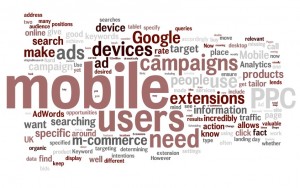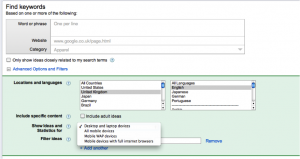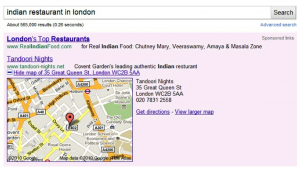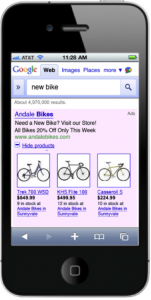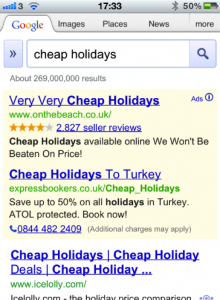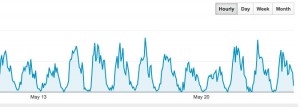PPC and M-Commerce
Before we tackle the subject of PPC and m-commerce, we need to consider a few statistics. We need to understand the sheer size of m-commerce and the rate at which it is growing in order to give this post some sort of context. We’ve covered most of these stats in our previous m-commerce posts, but to recap:
Key Statistics
- Of the 3 billion Google searches made every day, 20% are made on a mobile device and 40% are searches related to specific products or services.
- Based on our own findings, in 2009 around 0.02% of your websites traffic was mobile. This is now more like 16%.
- 23 million people in the UK use their mobile devices to buy online.
- 11% of UK smartphone owners now use their mobile devices to buy online on a weekly basis. (Portaltech and eDigitalResearch)
- In Q1 of 2012, mobile spend accounted for 13% of all online spend in the US.
In our previous m-commerce posts weve discussed some of the different strategies that can be deployed to get the most from your mobile traffic. However, one that we are yet to touch on is that of PPC advertising.
Does Mobile PPC Differ from Traditional PPC?
In a word, yes! Yet there are so many businesses out there running PPC campaigns that havent cottoned on to this and are simply missing opportunities.
You can create incredibly granular mobile campaigns, which is perhaps why it lends itself so well to m-commerce. You can target locations and networks, just as with any other AdWords campaign, but with mobile you can go even further.
Google frequently adds new features to AdWords, many of which allow you to refine your campaigns to become more targeted. In your campaign settings you can specify whether you want to target desktop, mobile or tablet devices. By default your campaigns will target all devices, so it is up to you to make sure that you make good use of these settings. You can even go one step further and specify what make and model devices you want to target.
Device targeting is set at campaign level, meaning that you should have separate campaigns for mobile/tablet/desktop. By doing this you can tailor your budgets, bids, and ads accordingly.
Know Your Audience
When it comes to tailoring your campaigns for each device type, there are certain things you’ll need to know about your audience.
Before looking into this, we need to address the misconceptions that people often have about mobile audiences:
Misconceptions About Mobile Users
- Mobile users are always on the move
It is often thought that people only ever use mobile devices when they are on the move. In fact, 60% of mobile use takes place in the home or in a place of work.
- Mobile users make concise searches
It is a common misconception that mobile users use very short search queries. In fact, around 40% of mobile search queries are 4 words or more.
With this in mind, you should never make assumptions about your mobile audience. When it comes to determining the intent of different users, you need cold, hard data. And what better resource for that kind of data than good ol’ Google Analytics?
Keyword Research
Google Analytics allows you to see whether visitors came to your site via desktop, mobile or tablet. You can break this down further and see which keywords mobile users searched to find you, your products or your services. This gives you an insight into the intentions and expectations of your mobile audience.
With this information, youll get a pretty good idea of what keywords to include in your PPC campaign. Plus, by seeing what types of keywords mobile users are searching (thanks to Google’s keyword tool), youll gain a valuable insight as to what your mobile users want from your website.
The Google Keyword Tool now gives search volumes determined by device type.
Tailor Your Ads Accordingly
Now that you know what users want to do when they find your site, you need to tailor your ads to meet their expectations. Convey the relevant information in the specified character limits. As with all PPC ads, keep your ad copy sharp and snappy, whilst providing as much detail as is humanly possible.
Use the Relevant Ad Extensions
Ad extensions are so under-utilised at the moment, yet they are such a good way of presenting a call to action on your ad. If you arent using ad extensions, youre missing out! There are various extensions available specifically for mobile ads.
Keeping your users intentions in mind, you can apply the relevant extensions to your ads. For example, if people are searching for contact details, provide them with a click to call extension. If youre making it easier for users to complete their desired action, youll undoubtedly experience an increase in conversion rate.
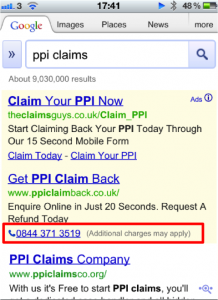
Shops and restaurants targeting mobile campaigns locally might choose to include location extensions that give users an address and map directions to find your physical location.
Or, if users are searching for specific products, including a call extension wouldnt be as effective as using product extensions. With product extensions youll be able to give users more information about the specific products they’re searching for.
Optimise Landing Pages
PPC landing pages must be optimised for the specified devices. If your landing page doesnt display clearly on a mobile device, there seems little point in directing mobile users to your page in the first place. If you make users work hard to achieve their desired goal, theyre likely to click off the page and look elsewhere.
Ensure that calls to action are clear and that buttons are easy to use. We all know how annoying it is to pinch and squeeze your screen until you can finally pinpoint the button you need.
Bidding
Mobile ads are displayed above and below organic search results (two above and usually three below). As such, it is crucial that your ad appears in the top two positions, as click through rate on ads below the organic results is dramatically less. Youll need to keep a close eye on your CPC bids to ensure that you achieve those premium positions.
Ad Scheduling
The times of day at which you schedule your ads to display may well differ with your mobile campaign. Again, determining the habits of mobile users is key to ensure that you dont miss out on valuable opportunities. Google Analytics allows you to view visits by the hour. Change your ad scheduling accordingly.
Use Whats Available!
PPC is an ever-evolving marketing channel that lends itself to m-commerce incredibly well and can prove incredibly effective as part of an integrated campaign. However, to ensure that you get the most out of PPC, you must utilise everything thats on offer.
Keep your eyes and ears open for new AdWords features. As mobile web continues to experience huge growth, Google will undoubtedly continue to provide the means to help us to get the most out of m-commerce. The tools are there, so use them!
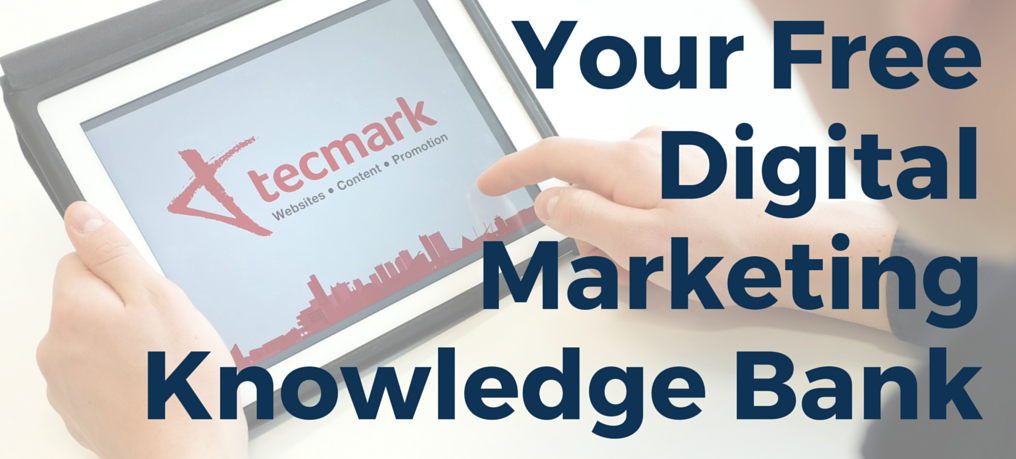
Get 123 pages of expert advice straight to your inbox.
-
Apps (46)
Content Marketing (67)
Digital PR (1)
Integrated Marketing (3)
Multi Screen (12)
News (99)
PPC (2)
Search (120)
Tecmark (70)
Uncategorized (2)

About the Author
